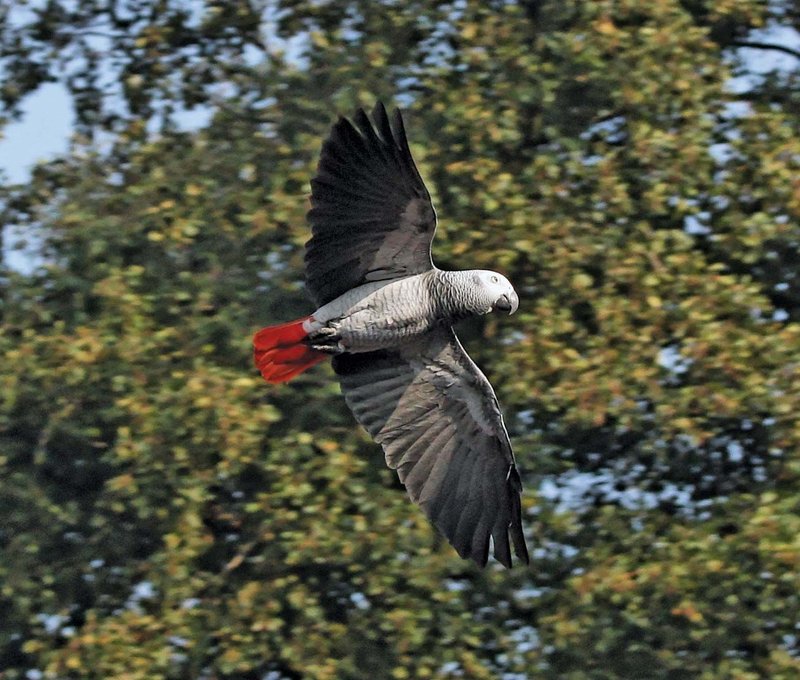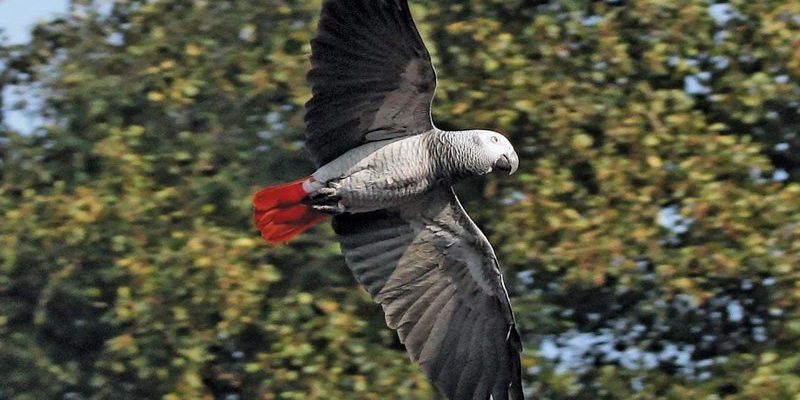
So, let’s take a journey back in time. Imagine you’re flipping through an old photo album, each picture telling a story about how African greys came to be the beloved birds we know today. From their wild habitats in the forests of Africa to their roles in human culture, their past is as vibrant as their feathers. Whether you’re considering welcoming one into your home or just curious about these intelligent creatures, knowing their history adds a layer of appreciation to your understanding.
Origin and Habitat of the African Grey Parrot
African grey parrots are native to the lush rainforests and wooded regions of West and Central Africa. Think of these areas as the birds’ bustling cities, full of trees where they can nest and find food. They thrive in environments rich with fruits, seeds, and nuts, which make up a significant part of their diet. You might be wondering, why are they so widely recognized? It’s partially due to their stunning looks and impressive intelligence, but also their adaptability to various habitats, from dense jungles to savannah woodlands.
There are two main types of African grey parrots: the Congo African Grey and the Timneh African Grey. The Congo is larger, with brighter red tail feathers, while the Timneh is smaller and has a more subdued palette. These differences may seem small, but they reflect the diverse environments these birds inhabit. While both types are highly sought after as pets, understanding their origins helps us appreciate their unique traits and needs.
Honestly, the plight of these parrots in the wild is a complex story. Habitat destruction, poaching, and the illegal pet trade threaten their populations. As deforestation takes its toll, these birds lose their homes and food sources. Conservation efforts are crucial to ensuring that future generations can enjoy the beauty and companionship of African greys.
The Role of African Grey Parrots in Culture
African grey parrots have a long-standing relationship with humans that goes back centuries. In many African cultures, these birds are symbols of wisdom and communication. Their remarkable ability to mimic sounds is often seen as a sign of intelligence and connection. You might think of them as the wise old sage of the bird world, sharing knowledge in the form of chirps and whistles.
In ancient Egypt, African greys were kept as companions by pharaohs and were often depicted in art and hieroglyphics. Their presence in the royal courts highlighted their importance as more than just pets – they were status symbols. Imagine walking alongside a majestic pharaoh, accompanied by a talking parrot; it’s an image that grabs your imagination.
Fast forward to today, African greys continue to play a significant role in our lives. They are often featured in media, from movies to social media, showcasing their incredible intelligence and charm. This visibility helps raise awareness about their needs and the issues they face in the wild, making the connection between culture and conservation even more vital.
Domestication of African Grey Parrots
The journey of African grey parrots from wild creatures to cherished companions is quite fascinating. Domestication started as humans recognized their intelligence and social nature. Early on, people began to capture these birds, not just for their beauty, but for their ability to learn human speech and sounds. You could say they were one of the original “talking pets,” and honestly, who wouldn’t want a feathered friend that can chat?
Over the years, the desire for African greys as pets has skyrocketed, leading to a demand that often results in unethical practices. Some breeders prioritize profit over the well-being of the birds, which can lead to health issues and behavioral problems. It’s essential for potential pet owners to do thorough research and choose reputable breeders who prioritize the birds’ welfare.
Let’s not forget that African greys are more than just pets; they’re lifelong companions that require a lot of attention and enrichment. Understanding their needs can help ensure that they thrive in a domestic environment. It’s a bit like having a toddler; you need patience, care, and a lot of love.
Behavior and Intelligence of African Grey Parrots
One of the standout features of African grey parrots is their intelligence. They are often compared to 4-year-old children in terms of cognitive abilities. They can learn hundreds of words and phrases, and they often understand the context in which to use them. Imagine having a bird that can not only repeat what you say but also interact with you in a meaningful way—how cool is that?
This intelligence also brings unique challenges. African greys need mental stimulation to prevent boredom, which can lead to destructive behaviors. Think of it like this: if you don’t give them something to do, they might start redecorating your living room with their beaks! Providing toys, puzzles, and regular interaction is crucial for their well-being.
Additionally, their social nature means they thrive on companionship. They often form strong bonds with their human families, imitating their moods and even picking up on emotional cues. This attachment can be incredibly rewarding but also requires a commitment of time and energy to nurture that bond.
The Importance of Conservation
As much as we adore African grey parrots as pets, it’s essential to remember their status in the wild. Many populations are declining, primarily due to habitat loss and the illegal pet trade. Conservation efforts play a critical role in protecting these magnificent birds and ensuring their future.
Organizations around the world are working hard to safeguard their natural habitats and promote sustainable practices. For instance, some initiatives focus on reforestation, providing safe environments for these birds to thrive. It’s kind of like giving them a second chance at life in the wild.
As you consider bringing an African grey into your life, think about how you can support conservation efforts. Whether it’s spreading awareness, donating to organizations, or simply educating yourself and others about their needs, every little bit helps. Together, we can help preserve these incredible creatures for generations to come.
Choosing An African Grey Parrot As A Pet
If you’re considering adding an African grey parrot to your family, there are a few things to keep in mind. First, they’re not just cute; they’re also incredibly social and intelligent. This means they thrive on interaction and require significant attention. You might be wondering how much time you really need to spend with them. Ideally, they should have several hours of socialization each day.
You also need to prepare your home for a new feathered friend. Creating a safe, stimulating environment is crucial. This includes having appropriate cages, toys, and activities to keep their minds engaged. Think of it like setting up a playroom for a child—everything needs to be safe and fun!
Lastly, consider their long lifespan. African grey parrots can live for 50 years or more, meaning you’re making a long-term commitment. If you’re ready for the responsibility, you might just find that an African grey parrot makes an amazing addition to your life, offering companionship and joy for decades.
Final Thoughts on African Grey Parrots
African grey parrots are more than just beautiful birds; they’ve got a rich history and a unique intelligence that captivates anyone lucky enough to encounter them. From their origins in the forests of Africa to their roles in our homes, understanding their evolution helps us appreciate just how special they are.
As you dive deeper into the world of African greys, remember to consider both their needs and the challenges they face in the wild. Whether you’re a seasoned bird owner or a curious newcomer, keeping these birds’ history in mind is key to ensuring their future. Let’s cherish these feathered wonders and do our part for their conservation and well-being.

